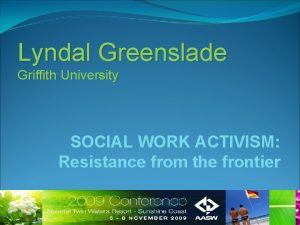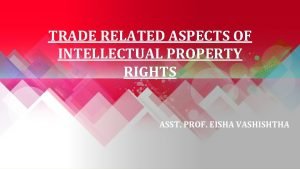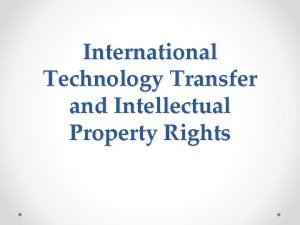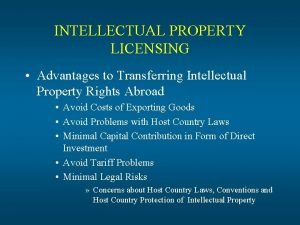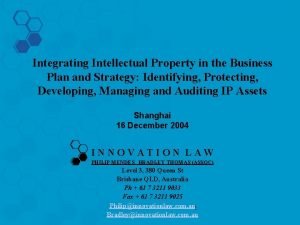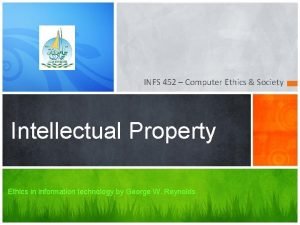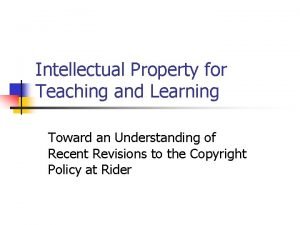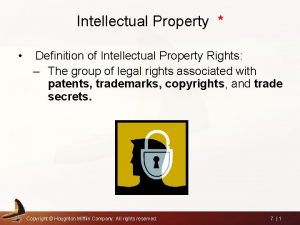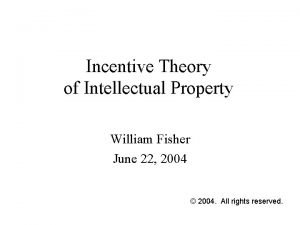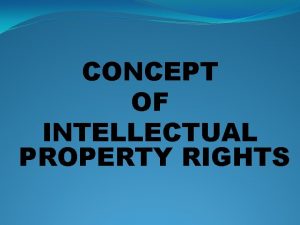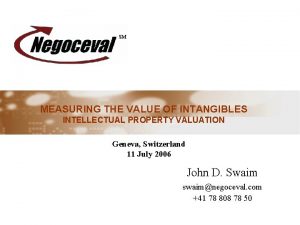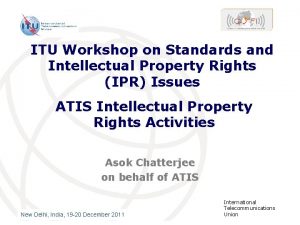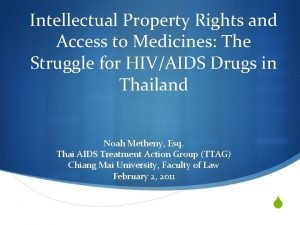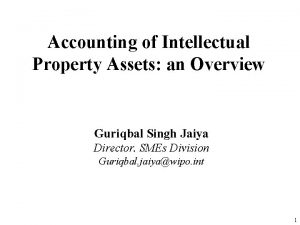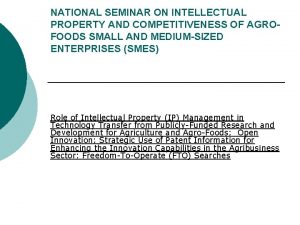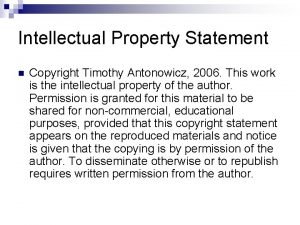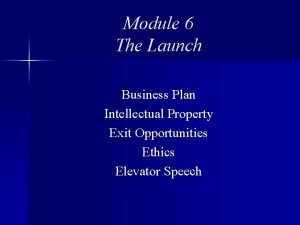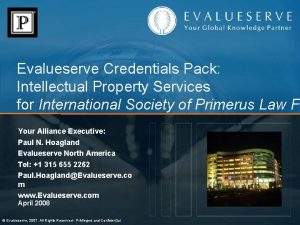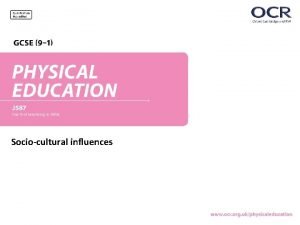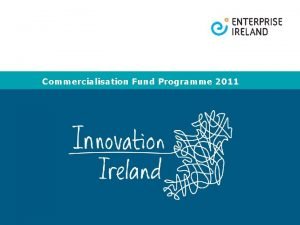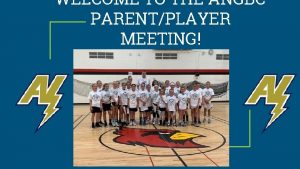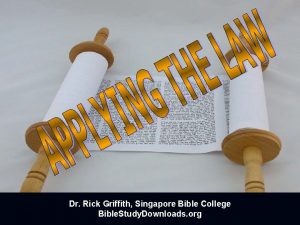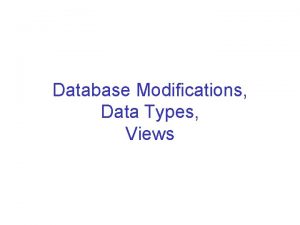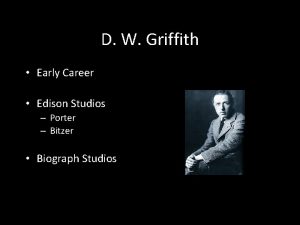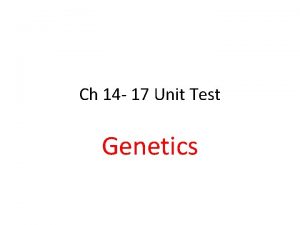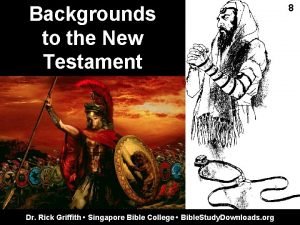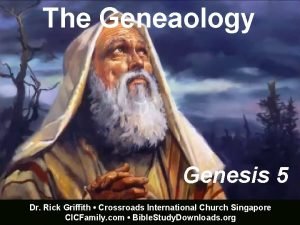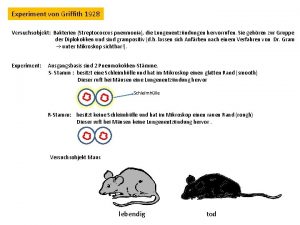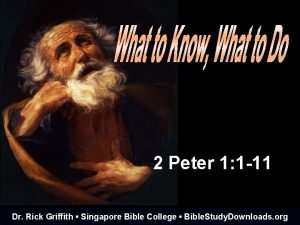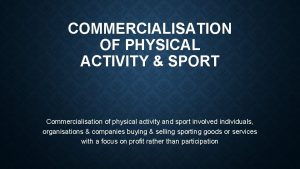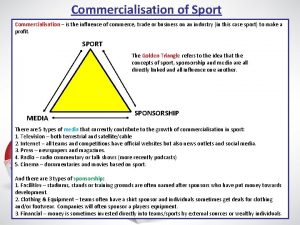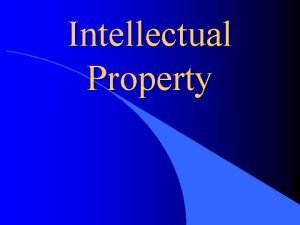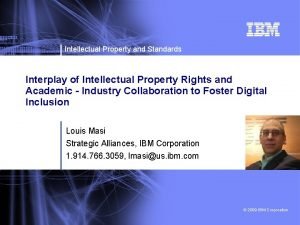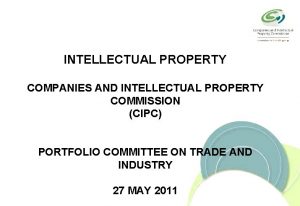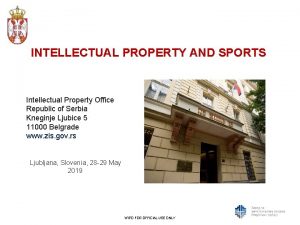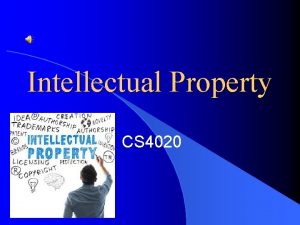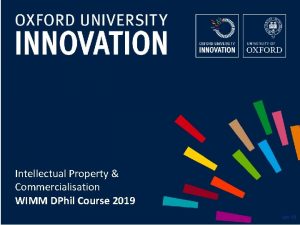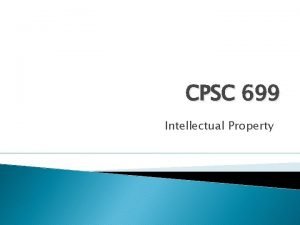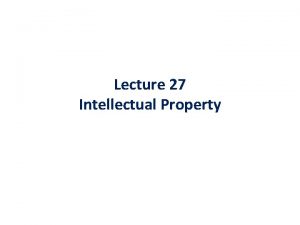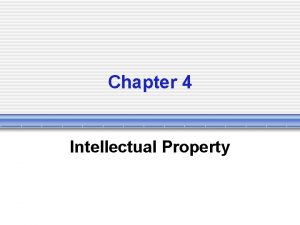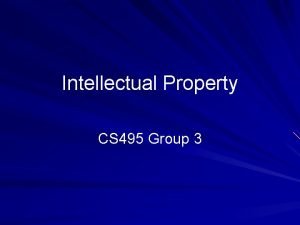Intellectual Property and University Commercialisation Philip Griffith Professor















































- Slides: 47

Intellectual Property and University Commercialisation Philip Griffith Professor of Law

• • • The last decade or so has seen some general changes in the economic, geopolitical and political dimensions of the economic system. The top five companies in 1975 were IBM, Exxon Mobil, Proctor & Gamble, General Electric and 3 M, in 2018 they were Apple, Alphabet, Microsoft, Amazon and Facebook. In late September 2019 they were Microsoft Corporation, Apple Incorporated, Amazon. com. inc, Facebook Inc. Class A and Berkshire Hathaway.

• • • In 1978, the Standard and Poor’s 500 Companies held assets that were 95% tangible and 5 % intangible. In 1994, the distribution was 38% tangible and 62 % intangible, in 2010 20% tangible and 80 % intangible In 2018 just 16% tangible and 84% intangible. Those intangible assets can be classified into eight types Of which five are actually Intellectual Property • • while the other three are classified as Public Rights, Non Revenue Rights and Relationships.


n Intellectual property includes a number of different types of laws n Undisclosed information Patents for inventions Copyright Industrial Designs Circuit Layout Rights Plant Varieties Rights Trade Marks in various forms Aspects of Unfair Competition laws n n n n

Undisclosed information and specifically “trade secrets” used to protect information as such. n When it applies it prohibits acquisition, use, and disclosure of an eligible secret to others without the consent of the controller of information. n Universities will acquire a great deal of undisclosed information that might be commercially valuable in the course of unpublished and undisclosed research. n Researchers should keep the research office and the IP office aware of potentially valuable secrets n

Trade secrets should be the subject of non disclosure agreements. n Trade secrets can be licenced and they can be sold n Perhaps most importantly the prospect of future secret information with commercial possibilities can be the basis of cooperative research projects with industry. n The University can acquire grants and funding for research and ongoing royalties in exchange for agreements to licence or sell or jointly develop the secret n

n n n But note the potential issues. Trade secret protection requires very disciplined management of researchers It is not always easy to manage academic researchers closely. Researchers also wish to publish their work. And once published the secret is no longer protectable as a secret. There may be a conflict between commercialisation of secrets and the proper role of an academic institution.

Another form of intellectual property is a patent for invention. n If a secret idea is – new (never published before anywhere) – Inventive … that is it is something that is more than the plain and logical extension of the prior art – Industrially applicable … that is that it will produce some discernable effect with economic significance n It is possible to seek a grant of patents rights, nationally and internationally if you want, for that secret n

Note that the patent system has less conflict with the rationale of an educational institution. n The patent system is designed to publish the secret at a certain point in the process. n A patent involves a bargain with the State that grants the patent where the inventor brings a new inventive industrially applicable secret to the patent office in exchange for a grant of rights in which the secret will be published. n The applicant must explain exactly what has been invented, provide completely full details of how to make the invention and set out “claims of monopoly” n

n n n If the patent is granted the patentee will have the exclusive right to make, use and commercially exploit the invention in exactly the ways set out in the claims. Writing claims is a highly technical art … and MUST always be done by experienced patent attorneys. University research offices or commercial units are almost never skilled enough to write proper patent claims. The application system is complex and involves costs. The secret should be kept strictly secret until a specific time in the application process … and it is always wiser to attempt to keep the secret until the date that the patent is actually published by the patent office. This might take some years.

Again this can be frustrating for researcher academics who want to publish their research. n The patent system does have rules about the assessment of “novelty” or “newness” that allows for the publication of the secret in scholarly journals and to be presented at academic conferences. n But once presented this way there is a very strict timetable for the filing of the application and the progress of the application. n If academics are going to publish or reveal anything valuable there should be a strict reporting requirement to the commercialisation office so it can decide if it wishes to try to patent the invention. n

n n n A last general point about patents … they are complicated, technical and expensive. Applying for a domestic patent takes time and money. If the patent is granted the patentee must pay renewal fees every year and the fees increase every year If the patentee wants patents in more than one country … and for any important invention this is crucial … it will take longer and cost a great deal … depending on what is chosen it can be US $100 s of thousands Some Universities have made a lot of money out of patents … most do not. In fact most lose time money and energy.

n n n If there is a secret that might lead to a patentable invention the best strategy for a university is usually to enter into an arrangement with a commercial business entity with money. The secret or the patent can be licenced or sold. The great majority of universities do not actually operate manufacturing or distribution and marketing businesses . . . There are just too many commercial risks. And if they do … they can only do a few It is better for a University to deal with the idea through exploiting the intellectual property rights as an asset than to try to commercialise the idea itself. I will come back to another aspect of patents

Another form of intellectual property is copyright. n Copyright gives exclusive rights of different kinds to literary, dramatic musical and artistic works and to “phonographic recordings, cinematographic films, radio and television broadcasts and transmissions, and published editions of works. n The major exclusive rights are to make copies, reproduce, either directly or indirectly, publish, distribute, communicate to the public and to adapt, the subject matter, or a substantial part of the subject matter. n More or less the entire intellectual output of a university if it is written or captured in any form will be the subject matter of copyright. n

n n n n A university has so much copyright that there is no practical way to audit it, to know what has been produced or to commercialise it. Most universities claim copyright and manage copyright in very important documents and in things like past exam papers. There is a major industry in selling students copies of past exam papers BUT. Copyright arises automatically. It does not have to be applied for. It does not have to be registered. But there is a question of ownership. This also applies to patents and to trade secrets.

n n n Most universities around the world have decided not to push this question. In most cases universities allow academics to keep the copyright in most of their writings … lecture notes, diagrams, scholarly articles to be published in journals, newspaper opinion pieces, text books. But they may put a term in the contract of employment to claim copyright ownership of things like course curricula, major research manuals and records, examination papers etc. It is a strategic and employer relations question each university must decide for itself. Mostly copyright will not be a major area for commercialisation

n n n But the question of ownership may be more important in relation to secrets and patents. Again the University will have to have a policy about ownership. Many require academic researchers to maintain close diaries of research so that every step is documented just in case an invention arises, and for the researchers to report the matter to the university . . through the research office or commercialisation unit. Then it is usual for the university to offer to enter into some agreement with the researchers about commercialisation. If the researchers will not enter into an agreement and use the universities guidance in an intellectual property strategy the University may assert ownership

n n n Note that in many cases the research in a university in areas of science, technology, engineering, chemistry etc may involve grants and funds from outside commercial interests. In that case there will usually be strict contractual arrangements about ownership of any IP that arises. There is also a complicated issue about post graduate researchers who become part of research teams whether funded by outside money or not. Often theresearch will be part of the post grads Ph. D topic. And yet it must be kept secret. How can this be managed. ? It is again a clash between the demands of commercialising IP capable ideas and the proper role of an educational institution and its obligations to its

n Patent system has always been concerned with “technology transfer” n A patent specification is a teaching document: n Should explain to a person skilled in a field of technology exactly – what has been invented and – how to put it into practice

n n n There is an enormous number of patent documents WIPO statistics for 2017 Innovators around the world filled 3. 17 million patent applications in 2017, representing an eighth consecutive year of growth. Trademark filing activity amounted to 12. 39 million, up 26. 8%. Worldwide industrial design ling activity exceeded 1. 24 million, while applications for utility models totaled 1. 76 million. There were almost 14 million patents in force in 2017 European Patent Office – holds 60, 000 patent documents

TOPICS n Range of patent documentation n Types of information in patent documents n Way information is presented n How information may be accessed n Some uses of information

PATENT DOCUMENTATION n n n n n Specifications in granted patents Specifications in applications not granted Specifications in petty patents, innovation patents, utility models Provisional application descriptions Decided cases in patent litigation Abstracts of inventions used to search Official gazettes, bulletins of patent offices References between sources Official patent indexes

n Data bases for computer searching – – Data bases of national or regional offices Specialist patent information providers Patent agent firms Individual enterprises n Government reports, discussion papers, draft legislation, etc n Compilations of patent statistics

TYPES OF INFORMATION n Technological and n Bibliographical information

TECHNOLOGICAL INFORMATION n Description of the state of the art prior to the invention n Detailed description of the invention in a form to instruct a person skilled in the art n Drawings or formulae n A claim or claims defining embodiments

BIBLIOGRAPHICAL INFORMATION n Dates names and addresses of: – – n the inventor, applicant for right, person claiming to be eligible for grant, patent representative, agent or attorney Classification symbols – IPC symbols – Maybe national patent classification Title of invention n Abstract of description n Representative drawing or formulae n

ADVANTAGES OF PATENT DOCUMENTS n n n n Current and recently granted patents and applications often contain most recent technological information publicly available in field. Often only source of information Detailed explanations of technology Detailed information in all fields Source of linking references Standard form of patents Bibliographical items standardised by INID code

ADVANTAGES OF PATENT DOCUMENTS n n n Classifications systems allow key to searching and analysis Abstracts assist sifting for relevance Bibliographical information allows contact with wide range of parties Standard formats allow creation of consistent data bases Patent family identifiable both by technology and territorially

INTERNATIONAL PATENT CLASSIFICATION n National patent classifications developed – USPTO 1831, German patent Office 1877, UK 1880 Once prior art included foreign patent documents was need for international system n WIPO and Strasbourg Agreement 1971 n IPC system (8 th edition) n – – – n 8 main sections of technology 21 subsections 129 classes 639 subclasses 7, 314 main groups 61, 397 groups (and rising) All identified by key symbols

INPADOC n International Patent Documentation Centre- 1972 – Established by WIPO and Austrian Govt – Now administered by EPO n Contains – Title, IPC classification symbols, any national classification symbol, relevant dates, eg filing, amendment, search, registration, names of inventor. Applicant, patentee, addresses. Contact information etc. Machine readable, computer storage, fully searchable n Information collected from national and regional patent offices n n Particularly useful in capacity to generate “patent families”

INPADOC forms of access n n n n n Patent Classification Service (PCS) Numerical database (NDB) Patent Family and Numerical List (PFS/INL) Patent Application Service (PAS) Patent Applicant Priorities (PAP) Patent Inventor Service (PIS) Patent Register Service (PRS) Patent Gazette (IPG) Watch CAPRI project n WIPO services for developing countries n User guides in particular fields n

OTHER CLASSIFICATIONS n ECLA- European Classification – 134, 000 sub divisions – EPO claims more precise, homogeneous and systematic than IPC – Concordance with IPC n USPC- United States Patent Classification – 400 classes, with class number – many subclasses all with detailed identifying symbols – Table of concordance with IPC

OTHER SOURCES OF INFORMATION Derwents World Patent Index (WPI) n Chemical Abstracts Service (CAS) n Private sources n – eg Siemens, – Hitachi, etc Patent Office data bases (free) n International Organisations (eg WIPO Patentscope) (free) n Commercial companies (fees) n n Note there are database providers and patent information and analysis service providers

The uses of information. n Testing novelty or inventive step n Information about the state of technology and method n Planning information n Management information

The users of information. n Patent offices n Governments and government departments and agencies n Researchers and teachers in higher education n Research and development institutions n Industrial enterprises

Use as technical information. n n n n n Determine most recent products and methods Accumulate and understand technological advance Locate related technology Identify technology trends Adapt research priorities R&D plans strategically targeted Allows “design around” or complementary development strategies Reduce incidence of “reinventing the wheel” Suggest solutions to analogous problems in other fields Indicator of feasibility

Use in claiming or protecting rights Search prior art databases for identical invention before making application n Search for similar inventions n • to identify technical issues which might be raised • possible opponents • Consider need for alternative solutions n Prior art search may suggest • need for new claims or • amendments to specification Source of information and evidence in opposition, revocation and infringement proceedings n See if possible patents of addition n Identify countries where rights could be sought or where likely competitor for rights n

Use as management tool - Government n Monitor foreign patent applications in own country • to level of foreign ownership and control in economy • Indicate trend of technology in foreign country • Can assist identifying import levels n Monitor domestic applications to identify • Level of domestic innovation • levels of R&D success Information to assess trends in economy n Identification of activity in differing sectors n Planning tool n Monitoring and analysing patents in a foreign country may reveal much about that countries economic and industrial development and assist trade policies n

Use as management tool - Enterprises Source of technological information for R&D n Compile and maintain IP inventory n Key performance targets and measures for n • Overall enterprise activity • Particular divisions or departments • Research teams or individual researchers Searching by inventor allows to monitor who is generator of new technology n Screen and monitor competitors n Use information to oppose competitors acquiring rights, seek revocation, defend infringement actions n Identify potential collaborators for cross licensing, patent pooling n

Use as management tool - Enterprises Use information to decide if should buy out competitor, merge or sell out to competitor n Identify possible ways to designs around others rights n Identify possible improvement patents on others patents n n And so on






 Griffith university social work
Griffith university social work Promotion from associate professor to professor
Promotion from associate professor to professor Trade-related aspects of intellectual property rights
Trade-related aspects of intellectual property rights Intellectual property in professional practices
Intellectual property in professional practices Importance of intellectual property
Importance of intellectual property Intellectual property management definition
Intellectual property management definition Advantages of intellectual property
Advantages of intellectual property Intellectual property business plan example
Intellectual property business plan example Intellectual property in computer ethics
Intellectual property in computer ethics Right to intellectual property of teachers
Right to intellectual property of teachers Industrial property definition
Industrial property definition Incentive theory
Incentive theory Concept of intellectual property
Concept of intellectual property Valuing intangible assets
Valuing intangible assets Intellectual property rights
Intellectual property rights Intellectual property rights
Intellectual property rights Characteristics of intellectual property
Characteristics of intellectual property Discuss intellectual property frankly
Discuss intellectual property frankly Gaap accounting for intellectual property
Gaap accounting for intellectual property Intellectual property
Intellectual property Intellectual property statement
Intellectual property statement Intellectual property business plan example
Intellectual property business plan example Evalueserve competitors
Evalueserve competitors Discuss intellectual property frankly
Discuss intellectual property frankly At&t ecommerce
At&t ecommerce Sport commercialisation triangle
Sport commercialisation triangle The golden triangle commercialisation
The golden triangle commercialisation Obstructed heritage and unobstructed heritage
Obstructed heritage and unobstructed heritage Physical properties and chemical properties
Physical properties and chemical properties Commercialisation in sport definition
Commercialisation in sport definition Ei commercialisation fund
Ei commercialisation fund Commutative and associative properties
Commutative and associative properties Dr rick griffith
Dr rick griffith Vandewalles appleton
Vandewalles appleton Niesha griffith
Niesha griffith Griffith thomas
Griffith thomas Dr rick griffith
Dr rick griffith Monomer of dna
Monomer of dna Melanie griffith
Melanie griffith Dw griffith
Dw griffith Dr rick griffith
Dr rick griffith In his transformation experiments what did griffith observe
In his transformation experiments what did griffith observe Rick griffith bible study downloads
Rick griffith bible study downloads Dr rick griffith
Dr rick griffith Versuch griffith
Versuch griffith Dr rick griffith
Dr rick griffith Dr rick griffith
Dr rick griffith Griffith studylink
Griffith studylink
